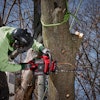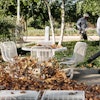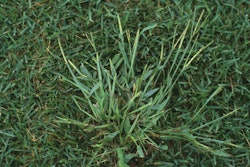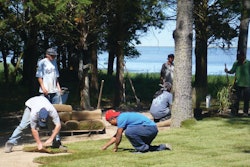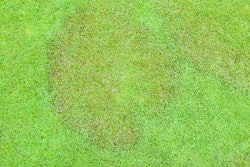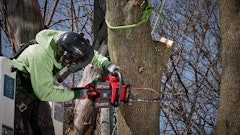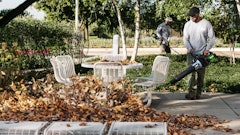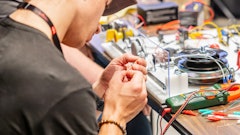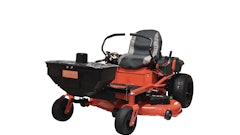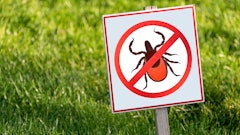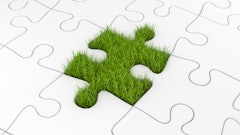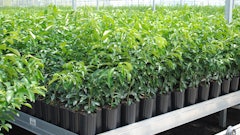One of the technical sessions at the 2014 Lawn Care Summit covered "Predicting & Diagnosing Turf Problems," presented by John Sorochan, Ph.D., University of Tennessee. Sorochan reminded lawn care pros that they can use weeds, insects and diseases as indicators of turf problems. Additionally, recognition of the fact that turfgrass grows best in full sun and deep/fertile/well-drained soil can further help you hone in on sources of turf issues.
Cultural Practices Play an Important Role
Start by examining the top five cultural practices: mowing, fertilization, irrigation, cultivation and pest management. "This requires integrated thinking," Sorochan says, because each plays a role in overall turf health.
Mowing. Improperly cut grass can cause a drop in turf quality. Furthermore, improperly cut grass can use up to 20% more water; see how mowing and irrigation are interrelated? Remember the 1/3 Rule: Never remove more than one-third of the grass at a time when mowing. You're better off to mow more frequently. (Check out this chart Sorochan presented on recommended mowing heights). Another thing to keep in mind is blade sharpness, as dull blades can severely damage grass.
Fertilization. A yearlong diet of nitrogen can improve turf health. Just make sure you're applying the right amounts (per manufacturer recommendations) in the right patterns at the right times. For cool-season grasses, three applications in April/May, August/September and October/November are ideal times. For warm-season grasses, applications should take place in the months of April through September.
Irrigation. Technology is dramatically changing the way landscape irrigation is viewed and implemented. There's much more to it than just applying a certain volume of water per specified timeframe. Pros must take into consideration things like soil type and water loss (i.e. evaporation), which is affected by factors such as temperature, humidity and wind speed. Tools such as handheld soil-moisture meters can help determine true irrigation needs. Polarized sunglasses can help you identify "hot spots" in the turf which may require more irrigation. It's also a good idea to adopt more of a "light and frequent" approach to irrigation, which reduces the chances of over-watering and/or leaching. In general, proper landscape irrigation today is about applying the right amounts of water to the right places at the right times.
Cultivation. Improper cultivation can often be a leading culprit of poor turf health. When it comes to aeration, for instance, "Don't be afraid to make Swiss cheese of cool-season turf," Sorochan says. You should aerate in both spring and fall on cool-season turf, and in the summer on warm-season. Applying a pre-emergent herbicide after aerating can be effective. Dethatching once a year can be helpful too. Finally, topdressing is an important step many contractors fail to execute. "Composts can really improve soil conditions," Sorochan points out. "But be careful to never apply a 'finer' layer over a courser one. Topdressing is a great service to offer in areas where you can't apply phosphorous."

